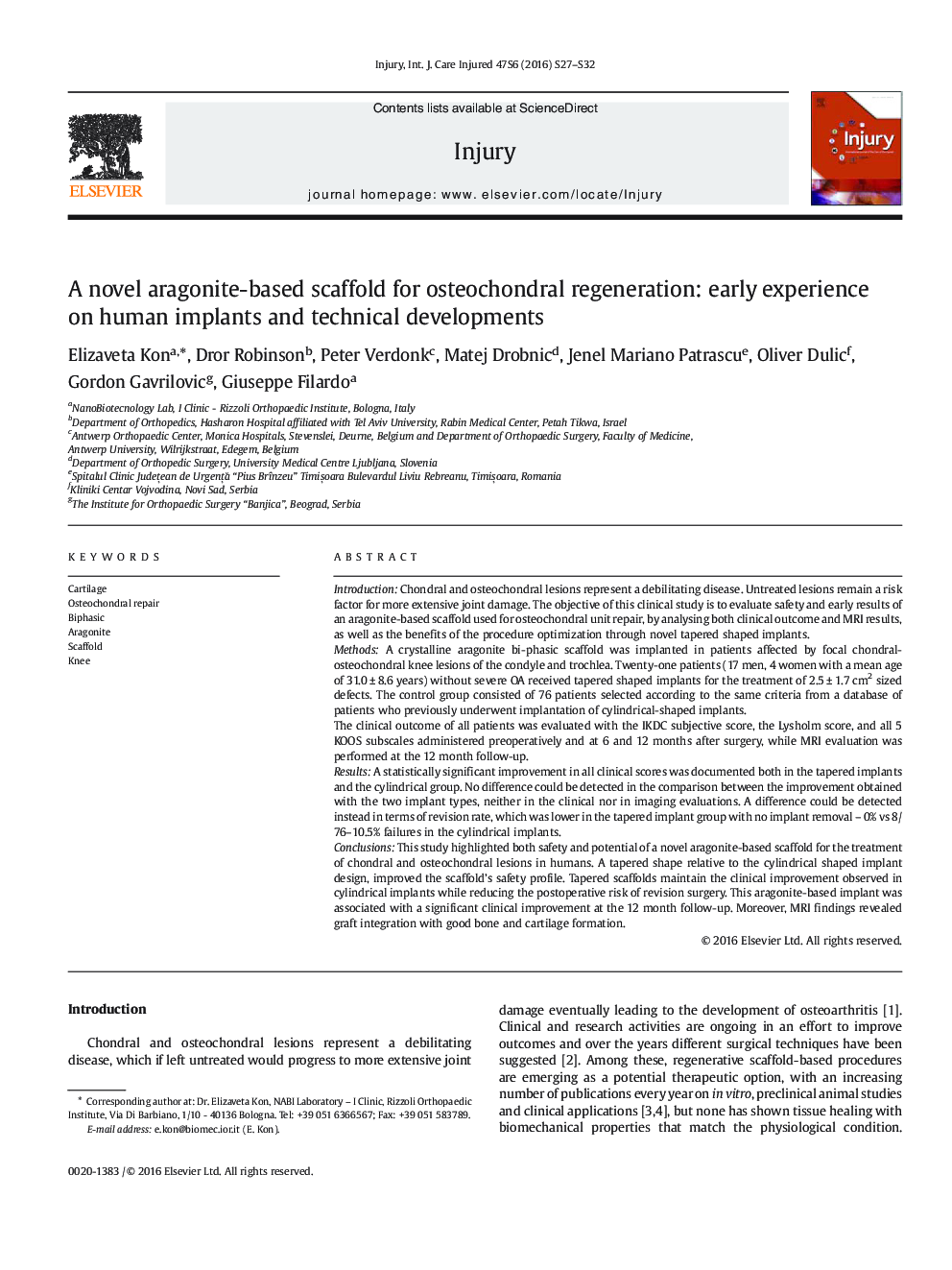| کد مقاله | کد نشریه | سال انتشار | مقاله انگلیسی | نسخه تمام متن |
|---|---|---|---|---|
| 5653007 | 1407232 | 2016 | 6 صفحه PDF | دانلود رایگان |
IntroductionChondral and osteochondral lesions represent a debilitating disease. Untreated lesions remain a risk factor for more extensive joint damage. The objective of this clinical study is to evaluate safety and early results of an aragonite-based scaffold used for osteochondral unit repair, by analysing both clinical outcome and MRI results, as well as the benefits of the procedure optimization through novel tapered shaped implants.MethodsA crystalline aragonite bi-phasic scaffold was implanted in patients affected by focal chondral-osteochondral knee lesions of the condyle and trochlea. Twenty-one patients (17 men, 4 women with a mean age of 31.0 ± 8.6 years) without severe OA received tapered shaped implants for the treatment of 2.5 ±1.7 cm2 sized defects. The control group consisted of 76 patients selected according to the same criteria from a database of patients who previously underwent implantation of cylindrical-shaped implants.The clinical outcome of all patients was evaluated with the IKDC subjective score, the Lysholm score, and all 5 KOOS subscales administered preoperatively and at 6 and 12 months after surgery, while MRI evaluation was performed at the 12 month follow-up.ResultsA statistically significant improvement in all clinical scores was documented both in the tapered implants and the cylindrical group. No difference could be detected in the comparison between the improvement obtained with the two implant types, neither in the clinical nor in imaging evaluations. A difference could be detected instead in terms of revision rate, which was lower in the tapered implant group with no implant removal - 0% vs 8/76-10.5% failures in the cylindrical implants.ConclusionsThis study highlighted both safety and potential of a novel aragonite-based scaffold for the treatment of chondral and osteochondral lesions in humans. A tapered shape relative to the cylindrical shaped implant design, improved the scaffold's safety profile. Tapered scaffolds maintain the clinical improvement observed in cylindrical implants while reducing the postoperative risk of revision surgery. This aragonite-based implant was associated with a significant clinical improvement at the 12 month follow-up. Moreover, MRI findings revealed graft integration with good bone and cartilage formation.
Journal: Injury - Volume 47, Supplement 6, December 2016, Pages S27-S32
